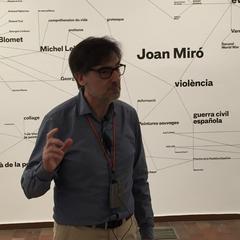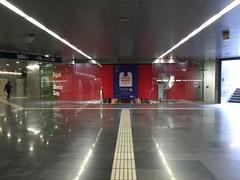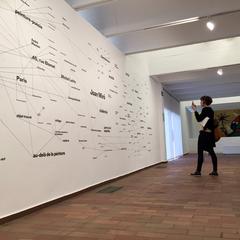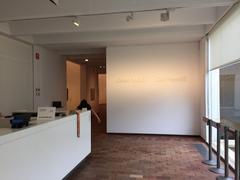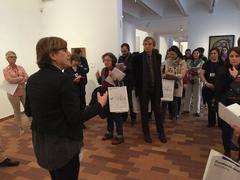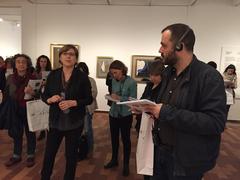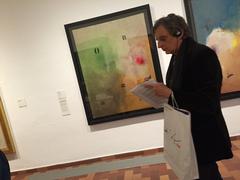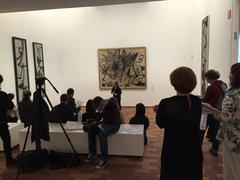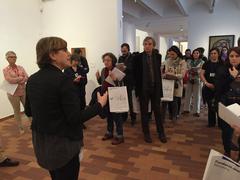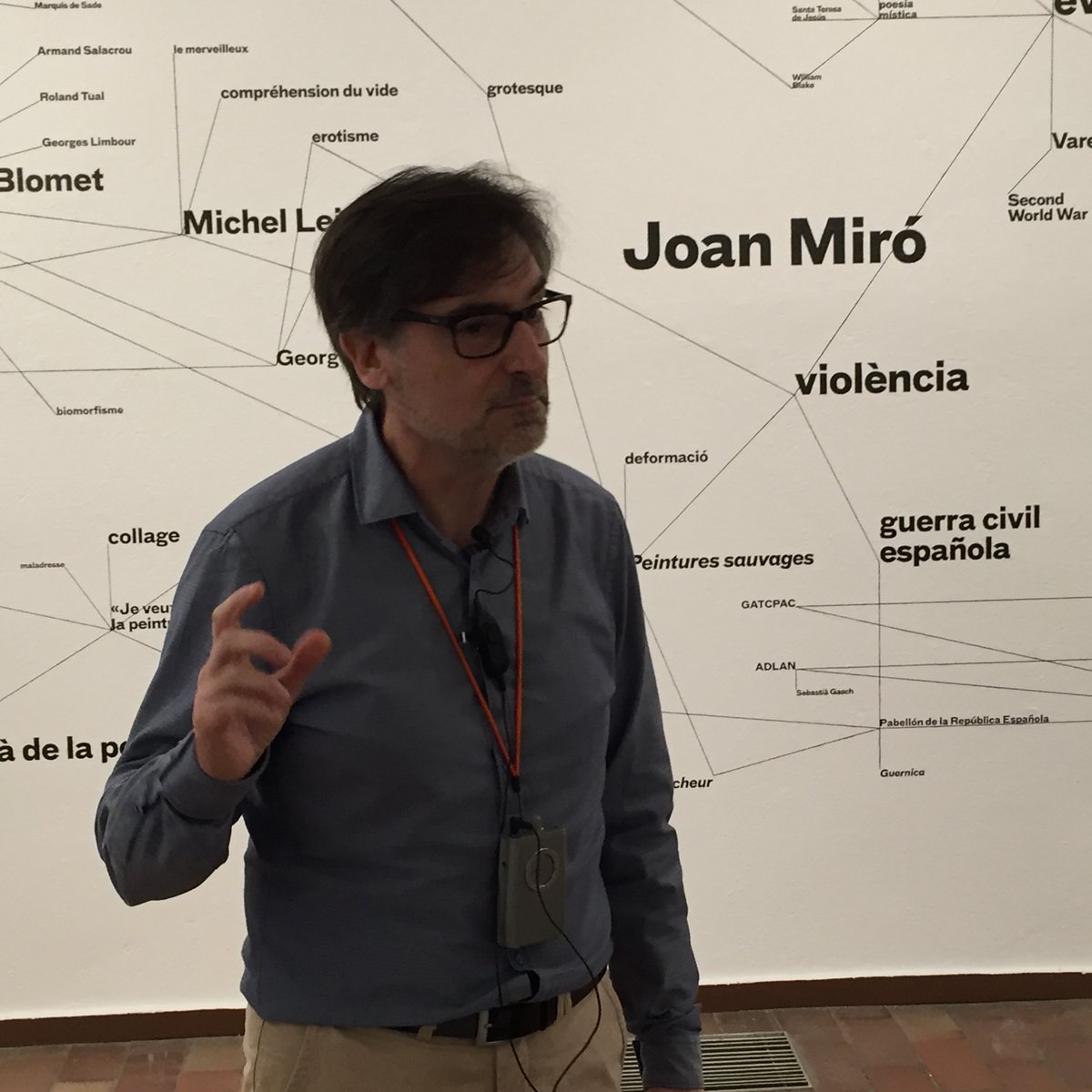
Fundació Joan Miró Barcelona: Visiting Hours, Tickets, and Complete Visitor Guide
Date: 14/06/2025
Introduction
Perched atop Montjuïc Hill, the Fundació Joan Miró is a beacon of modern art and Catalan culture in Barcelona. Established by the artist himself in 1975, the foundation serves as both a museum dedicated to Miró’s prolific output and a dynamic center for contemporary creativity. Designed by architect Josep Lluís Sert, the building’s harmonious, light-filled spaces complement Miró’s vibrant works while offering panoramic city and Mediterranean views. This detailed guide provides everything you need to plan your visit, including opening hours, ticketing, accessibility, and insider tips to fully experience this essential Barcelona historical site (Fundació Joan Miró official site; Barcelona.de).
Table of Contents
- Origins and Vision
- Joan Miró: Artistic Roots
- Architectural Highlights
- Collection and Exhibitions
- Visitor Information
- Insider Tips and Nearby Attractions
- FAQs
- Conclusion
- References
Origins and Vision
The Fundació Joan Miró was conceived by Miró as a space to make art accessible and to cultivate new creative talent. The foundation was legally established in 1972 and opened to the public in 1975. Its mission extends beyond showcasing Miró’s own works; it also supports contemporary art through exhibitions, educational activities, and the experimental Espai 13 gallery (Fundació Joan Miró official site; Museos.com; Mesto Barcelona).
Joan Miró: Artistic Roots
Born in Barcelona in 1893, Joan Miró’s artistic journey was shaped by the landscapes of Catalonia, the avant-garde circles of Paris, and the tranquility of Mallorca. His work, known for its bold abstraction, surrealism, and poetic symbolism, reflects a lifelong quest to create a universal visual language, often inspired by dreams, folklore, and nature (Fundació Joan Miró official site). Miró’s art also responded to the political and social challenges of his era, making him a pivotal figure in 20th-century modernism.
Architectural Highlights
The museum’s building, designed by Miró’s friend Josep Lluís Sert, is an architectural masterpiece of Mediterranean rationalism. Sert’s design features sunlit galleries, open courtyards, and accessible rooftop terraces that frame both Miró’s art and the Barcelona skyline. The interplay of art, architecture, and landscape is fundamental to the visitor experience (ArchDaily; WeBarcelona).
Collection and Exhibitions
Permanent Collection
The Fundació Joan Miró houses over 16,000 works, including:
- 217 paintings
- 178 sculptures
- 9 textile works
- 4 ceramics
- 8,000+ drawings and prints
The galleries are organized thematically, tracing Miró’s evolution from early figurative pieces to his mature abstract and surrealist works. Visitors can see iconic pieces such as “The White Glove” (1925) and monumental tapestries, as well as the Kazumasa Katsuta Collection, which highlights Miró’s international appeal (Exp1; The Geographical Cure).
Outdoor Spaces
The rooftop terrace and courtyards feature Miró’s whimsical sculptures, such as “La caresse d’un oiseau” (“The Caress of a Bird,” 1967), as well as panoramic views of the city and sea. These spaces reflect Sert’s vision of integrating art, architecture, and nature (The Geographical Cure).
Espai 13 and Temporary Exhibitions
Espai 13 is dedicated to emerging and experimental artists, hosting rotating exhibitions that align with Miró’s commitment to innovation. The foundation also curates major temporary exhibitions; for the 50th anniversary (June 2025–June 2026), highlights include “Miró and the United States,” exploring Miró’s transatlantic artistic exchanges (Barcelona Turisme; Catalan News; VilaWeb).
Notable Works by Miró’s Contemporaries
The collection features works by friends and contemporaries such as Max Ernst, Marcel Duchamp, Henri Matisse, Henry Moore, and Alexander Calder. Calder’s Mercury Fountain, created for the 1937 World Fair, is a visitor favorite (The Geographical Cure).
Visitor Information
Opening Hours
- November–March: Tuesday to Sunday, 10:00 am – 6:00 pm
- April–October: Tuesday to Sunday, 10:00 am – 7:00 pm
- Closed Mondays (except select holidays: June 5, September 11, September 25)
- Last ticket issued 30 minutes before closing (danielasantosaraujo.com; Barcelona Attractions)
Tickets and Admission
- General Admission: €13 (includes permanent and temporary exhibitions)
- Reduced Admission: €7 (students aged 15–30, seniors 65+)
- Temporary Exhibition Only: €7 (general), €5 (reduced)
- Espai 13 Ticket: €3 (general), €2 (reduced)
- Children under 15: Free
- Barcelona Articket: €35 for access to six museums
- Online purchase recommended to avoid queues
Note: Check the official website for updates or special offers.
Accessibility
- Fully wheelchair accessible (ramps, elevators, adapted restrooms)
- Audio guides and tactile materials available
- Staff assistance on request (Fundació Joan Miró)
Getting There
- Address: Avinguda de Miramar, 1, 08038 Barcelona
- Metro: Lines L1 or L3 to Plaça d’Espanya, then a 20–25 min walk
- Bus: Lines 55 and 150 to Parc de Montjuïc
- Montjuïc Funicular: Connects from Paral·lel metro station
- Cable Car: Offers scenic access from the lower hill
- Parking: No dedicated parking; public transport recommended
Facilities & Amenities
- Cloakroom and lockers (€1 deposit)
- Café with terrace seating
- Museum shop with books, prints, and gifts
- Free Wi-Fi
- Clean, accessible restrooms
Insider Tips and Nearby Attractions
- Best time to visit: Early weekday mornings for fewer crowds.
- Combine your visit with Montjuïc attractions: Museu Nacional d’Art de Catalunya (MNAC), Magic Fountain, Montjuïc Castle.
- Photography: Non-flash photography allowed in the permanent collection; restrictions in temporary exhibitions.
- Visit duration: 1.5–2 hours recommended; allow extra time for rooftop views and the shop.
- Local dining: Explore Poble-sec and Sant Antoni for authentic tapas.
FAQs
Q: What are the opening hours?
A: Tuesday–Sunday, 10:00 am–6:00/7:00 pm depending on season; closed Mondays.
Q: How do I buy tickets?
A: Purchase online (recommended) or at the museum entrance.
Q: Is the museum accessible?
A: Yes, with full wheelchair access, elevators, and adapted restrooms.
Q: Are guided tours available?
A: Yes, in multiple languages; advance booking advised.
Q: Can I take photos inside?
A: Non-flash photography permitted in the permanent collection.
Q: Is parking available?
A: No dedicated parking; use public transport.
Conclusion
The Fundació Joan Miró is more than a museum—it is a living testament to artistic innovation, Catalan heritage, and the enduring legacy of Joan Miró. Its world-class collection, inspirational architecture, and commitment to accessibility make it a must-visit for anyone exploring Barcelona’s cultural landscape. For an optimal experience, book tickets online in advance, check the calendar for special exhibitions, and take time to enjoy the terraces and gardens. Enhance your visit with resources like the Audiala mobile app, and stay connected for updates on exhibitions and events. Discover why Fundació Joan Miró remains a cornerstone of Barcelona’s artistic identity (Fundació Joan Miró official site; Barcelona Turisme).
References
- Fundació Joan Miró official site
- Barcelona.de
- Museos.com
- Mesto Barcelona
- ArchDaily
- WeBarcelona
- Barcelona Turisme
- Catalan News
- VilaWeb
- danielasantosaraujo.com
- Barcelona Attractions
- Exp1
- The Geographical Cure
